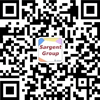Ted Sargent will be giving a special seminar at Stanford University Sept. 7th, 2017 – Packard Rm 101, 4pm. The abstract for the talk is below:
Rapid progress in the cost-effective conversion of solar and wind energy into electrical power brings about a new challenge: the massive (seasonal-scale) storage of energy. We focus on using computational materials science, spectroscopies including ultrafast and synchrotron, and advances in materials chemistry, to create new catalysts for CO2 reduction and oxygen evolution.
I will discuss recent advances including new high-activity OER catalysts and lowoverpotential CO2 reduction catalysts based on field-induced reagent concentration. I will also touch on related materials design problems in optoelectronics, including the design of organic-inorganic materials for photon-to-electron and electron-to-photon conversion.

 the
the 

